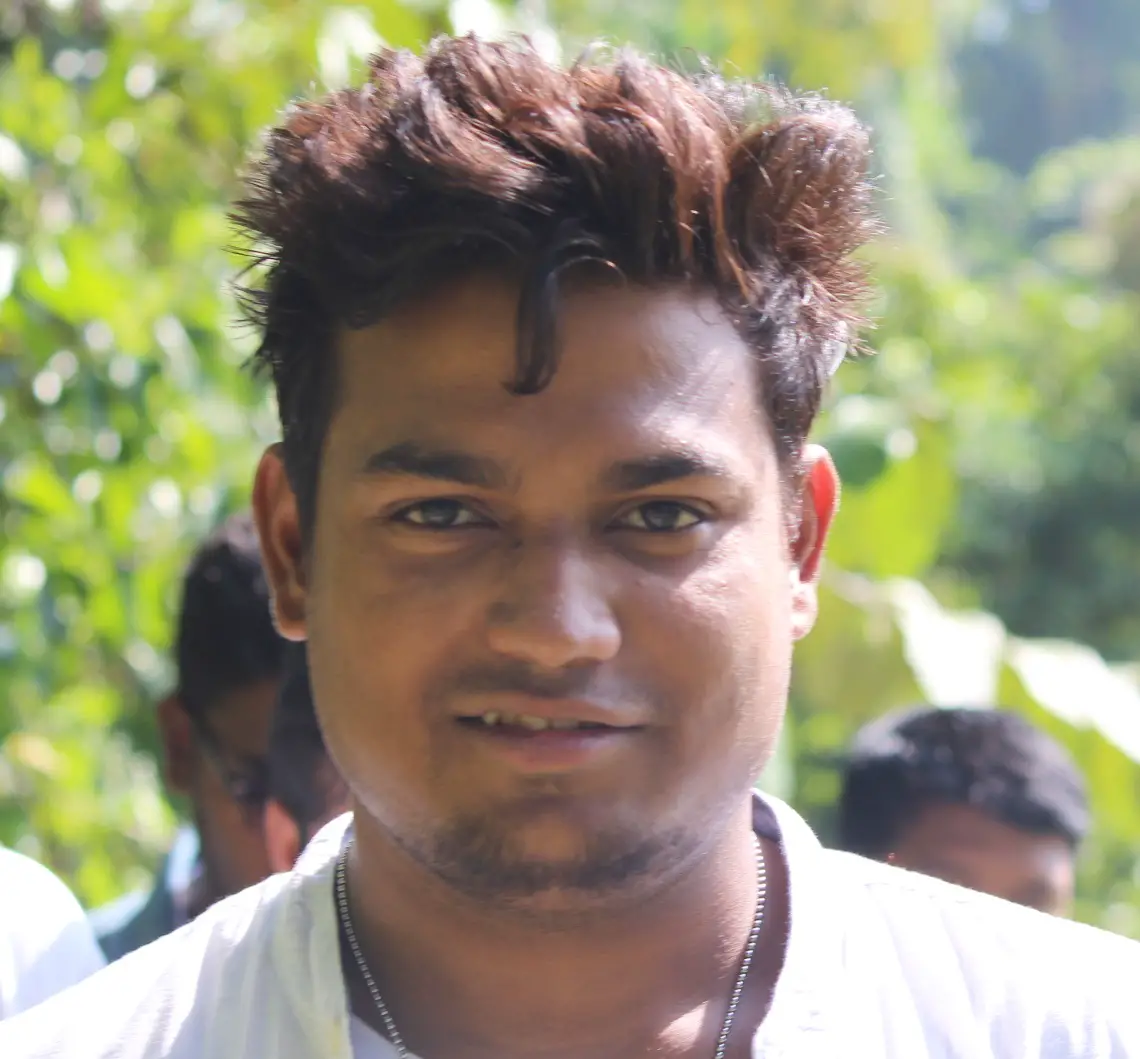
Guest Post by Vivek Roy
A 2012 study found that over 20 million people practice yoga in the United States, but the statistic still represents less than 10 percent of the total population.
That’s unfortunate, because yoga is one of the best foundational exercises for improving your day-to-day, minute-to-minute breathing, reducing adrenal fatigue and stress throughout the day, and much more.
Many of the top poses in yoga are named after animals, and each provides a unique type of stretch that oftentimes corresponds with the graceful movements of each animal.
The following are the top 8 animal poses in yoga, although there are many more where this came from.
Learn how to do these 8 poses at home for a total body workout and an excellent way to strengthen and tone your body from the comfort of your own home.
Scroll down to see pictures of each pose along with detailed instructions (Each pose should be held for at least 10-12 breaths, but many experienced yogis can hold them for up to 30 breaths. That’s part of the fun, and the challenge!).

1. Cow Pose: The Sanskrit name of the Cow pose is Marjaiasana.
The following is the process for performing the cow pose in yoga.
First, sit on your knees and then place your palms on the mat and make sure that your elbow and armpit make a 90 degree angle with the wrist, and also notice that the spine is parallel with the ground and facing down.
Next, look up and bring your chest up before mounting your hips up.
Push your spine up like a camel, and now inhale and look up, then exhale and touch your chin to your chest.
Do this about 5-6 times and then relax, keeping a focus on your breath the entire time, especially if you feel difficulties in holding the pose.
Benefits of the Cow pose in yoga:
-Stretches the hips and back
-Increases coordination
-Creates emotional balance
-Provides a gentle massage to the spine and belly organs
-Stretches the front torso and neck
-Calms the mind and relieves stress
-Improves posture and balance
-Activates the Adrenal Glands
-Activates the Pancreas
-Keeps the Reproductive Organs fit
-Strengthens the arms and the shoulders
-Deep stretch to the neck; improves flexibility
2. Crow pose: The other name of Crow pose is Bakasana.
Now let’s explore how to do this (highly advanced) yoga pose. If you can’t handle this one, skip to the next one.
First, place your hands on the Earth and begin to balance yourself while bringing your knees above your triceps (see below).
Bring your arms closer to your body and feel the weight at the starting point of your fingers, now make an angle with your wrist which is less than or equal to 90 degrees, then feel the weight and bend the elbow.
After that you’ll feel like your legs are very light; now lift up your legs and wait for some time and then slowly come back.
If you start to feel too much difficulty or strain, you can bring your knees inside your triceps, but be sure to listen to your body and do not proceed if you start feeling pain.
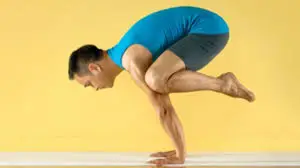
Benefits of the Crow pose:
-Tones the abdominal wall
-Strengthens arms
-Opens the groin
-Builds endurance and focus
-Improves balance and full body coordination
-Strengthens the abdominal muscle
-Strengthens the upper back
-Helps you embrace Courage
-Strengthens the sacral chakra, which corresponds to your center of creativity and emotions according to the theory of the chakra system originating in eastern yoga traditions
-Improves your sense of coordination
-Adds to a Flexible spine
-Beneficial for Wrists
3. Camel pose: The Sanskrit name of Camel pose is Utrasana.
Begin by sitting in vajrasana (a basic kneeling pose with your back straight and your knees in front of you) then stand on your knees before going into the actual pose.
First, warm up your back by bringing your hand above the hip facing the fingers downward and then slowly pushing your hip forward, doing it for 2-3 times.
Now, going into the actual pose, push your hip forward and slowly bring your arms with your ankle to release the pose, inhale and relax.
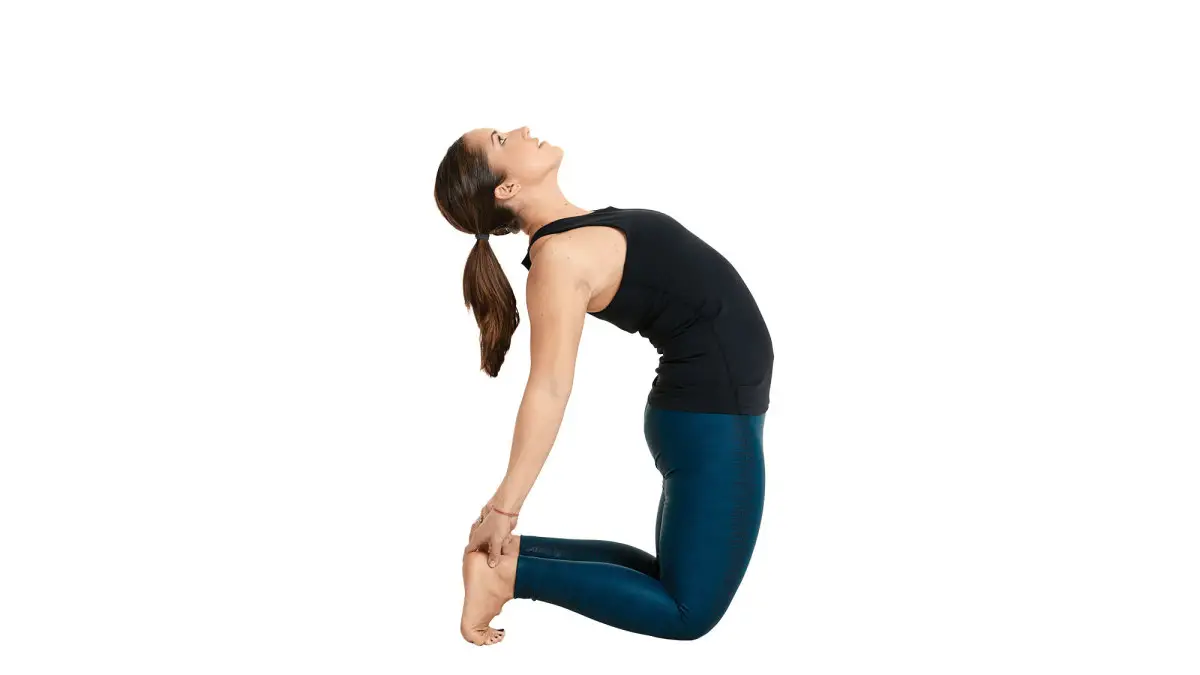
Benefits of Camel pose-
-Reduce fat on thighs.
-Improve posture.
-Opens the chest, improving respiration.
-Loosens up the vertebrate.
-Ustrasana stretches the front of the body.
-Improves spinal flexibility.
4. Pigeon Pose: The Sanskrit name of Pigeon Pose is Rajakapostasana.
This is a relatively easy and powerful stress-relieving pose that always makes for a useful stretch.
First, lean on knee in front of you with one leg straight and stretched all the way to the back. Keep your back straight and your head up.
Now, take your right leg in between your hands and stretch your left leg out, then drop your neck in a downward direction toward your back side and point your toes to your head. If possible, fold your hands on your ankle and then hold the pose; slowly stretch yourself downward and relax while breathing.
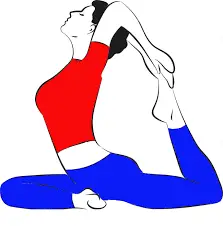
Benefits of the pigeon pose-
-Opens the hip joint.
-Helps with urinary disorders.
-Stimulates the internal organs.
-It is a restorative, primal reaction to stored stress, trauma, fear and anxiety in the hips.
-Opens the hips, leading to less back pain.
5. Cobra pose: The Sanskrit name of this is Bhujangasana.
A simple yet powerful stretch that can be done just about anywhere, the cobra pose is a favorite of many yogis; advanced and beginners alike.
Begin by lying on your stomach and bringing your chin to the mat; next, place your palms under your shoulders, inhale, lift your chest and hips while remaining on the floor.
Breathe, relax your shoulder down and press your chest forward, now exhale gently, lower your chest and bring your chin to the mat. Slowly and with control rest your arms by sides and relax.
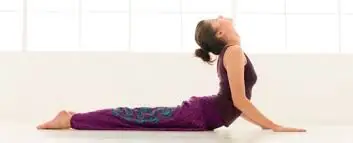
Benefits of the Cobra pose-
-Stretches muscles in the shoulders, chest and abdominals.
-Decreases stiffness of the lower back.
-Increases flexibility.
-Improves menstrual irregularities.
-Elevates mood.
6. Fish pose: The Sanskrit name of it is Matsyasana.
The fish pose is an incredible total body stretch for dealing with and letting go of the stressors of the day.
To start, lie on your back, cross your legs in padmasana (lotus position, or sitting Indian style before laying backwards) and relax the whole body. Listen to your body do not force any movement, and support the body with the arms and elbows.
Lift the chest slightly, take the head back and lower the crown the lower of head to the floor. Hold the big toes and rest the elbow on the floor, breathe slowly and deeply; taking the support of the elbows, release the head, straighten the legs and relax.

Benefits of Fish pose-
-Stretches the front of the body, particularly the throat, chest, abdomen, hip flexors, and intercostals.
-Strengthens the upper back muscles and the back of the neck.
-Relieves tension in the Neck and Shoulders.
-Can help heal respiratory ailments.
-Fights Constipation.
7.Cat pose- The Sanskrit name of it is Marjaiasana.
To begin the cat pose, sit in dandasana (sit down with your arms at a 90 degree angle pressed against the floor and both legs in front of you); bend your knees and bring your left foot underneath your right knee, now raise the right arm above your head and bend the elbow.
Simultaneously bring the left hand behind the back with a bent elbow, now breathe, exhale, release your arms, cross your legs and sit in your original pose.
Repeat with the other leg crossed over.

Benefits of Cat pose-
-Aids chronic knee pain.
-Clears hip joint .
-Strengthens spine and abdominals.
-Flex the back .
-Helps to reduce backaches.
8. Downward Facing Dog: The Sansarit name of it is Adho Mukha Shvanasana.
Downward facing dog is the last and one of the most fundamental poses of yoga on this list.
To do it, first keep your palms on the mat and keep the distance between the fingers, making sure that your heels are not touching the floor.
Then, bend your knees gently one-by-one and keep pressing your heels down, feeling your spine lengthen while breathing deep and closing your eyes. Try to feel your hip pushing your heel down, now you can again move your knees slowly one after the other.
Now, sit down and push your knees down and head to the floor.
Look backward toward your navel as your head hangs toward the ground and focus on your breath as always.
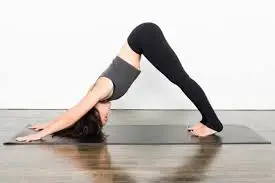
Benefits of Downward facing dog-
-Calms the brain.
-Helps to relieve stress and mild depression.
-Strengthens the arms and legs.
-Helps to relieve symptoms of menopause.
Vivek Roy is an enthusiastic Yoga blogger and Traveller from India. He has done 200 hours of yoga teacher training. He loves to travel and share the knowledge of yoga around the world. For more information about him visit his website Sattva Yoga Academy. Photos via Vivek Roy
Thanks for installing the Bottom of every post plugin by Corey Salzano. Contact me if you need custom WordPress plugins or website design.




